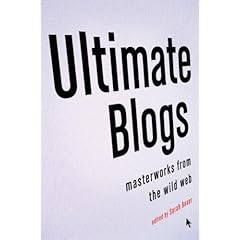This is one of an occasional email that I write to an author after reading their books. I have no idea what possesses me, but that non-reflective stance has never stopped me before. Today, I am writing an email to Bob Servant (or is it Neil Forsythe?) who wrote a wonderful tome entitled: Delete This At Your Peril! that centers on Servant’s email exchanges with spammers who clog our inboxes with harrowing tales of royal riches, Russian brides and other adventures.
Bob, of Scotland, decides to join in the fracas with wit and humor, and I was laughing so hard my children were worried about me.
Here is a blurb from his website:
Delete This At Your Peril features the anarchic exchanges between Bob and the hapless spam merchants. As they offer Bob lost African millions, Russian brides and get-rich-quick scams he responds by generously offering some outlandish schemes of his own. The spammers may have breached his firewall, but they have met their match as Bob Servant rises heroically to the challenge, and sows confusion in his wake.
Also at Bob’s website, I found his email address and wrote him a letter.
Dear Bob,
I am a little reluctant to send you an email, knowing as I now do the possibilities of your replies. I don’t have the time or energy for that kind of relationship. So let me just start out by saying that I do not have a load of cash sitting in a vault in Africa, nor am I the long lost heir to some royal seat in Zambia. I will never be considered a Russian beauty with a well-endowed chest (although my wife thinks I am cute enough for her) who seeks a hubby for love and life, nor will I give you 15 percent profits if my “friends” wire you some cash that the government shouldn’t know about. In addition, Bob, let me make it clear that I have no interest whatsoever in Chinese rubber belts or plastic planter pots of any sort. Neither do I intend to fall for your “Bobby” babe routine.
And, just so we all understand and are on the up and up, I never took your window-washing ladders that day that will clearly live in infamy in your mind, Bob.
That said, Bob, I wanted to let you know how much I enjoyed your book, which I read yesterday afternoon in one long stretch. My kids were running amok, the chores were not being done, and in general, I let the world go to hell as I laughed my butt off about your exploits with email. I may never look at one of those spam emails again without thinking of you, Bob. Come to think of it, though, I had finally found myself not even noticing the spam anymore. Kind of like the kids screaming and you just tune them out completely? You know how that works. It just falls outside your field of vision. Now I will notice the spam again. I’ll see it in my inbox and think, should I forward this to Bob or has he already seen it?
So I am now wondering if I should be thanking you or be getting pissed off about spam coming back into my sight.
Let’s leave it at thanks, Bob. I bought the book, after all. You only wrote it. Staying positive about this whole spam situation keep us on some good footing, don’t you think?
Bob, I want to say that it’s not often that you run across someone who has the intellect to parry with the unknowns of this world, but you, Bob, have done it, with grace and humor and just enough vulgarity to make your adventure fun for the rest of us. I pictured you, with all of your Jazz magazines piled like rocks around you, punching keys in Scotland and meanwhile, somewhere in the world, some other fool was trying to string you along with only one goal: to gain your Cheeseburger Van fortune.
The real question is: are there really people who send along their bank numbers? Is this world littered with such imbeciles? Are we all such fools?
No need to answer, Bob. I think we both know the answer is, sadly, yes.
I come, then, to another sticky matter: Are you real, Bob? Or are you just some imaginary device from your pal, Neil? I guess it doesn’t matter. In the wired world, an imaginary fellow has as much chance to do damage as the real one.
Keep up the good work!
A pal from across the seas,
Kevin
The book can be ordered via Amazon. (Bob promises to ship me two talking lions for promoting his book, so tell them I sent ya)
Peace (in humor),
Kevin
My review: The innocence of millions were lost to comic books, or so politicians would have had us believe. Yet the genre survived intact – thankfully.









